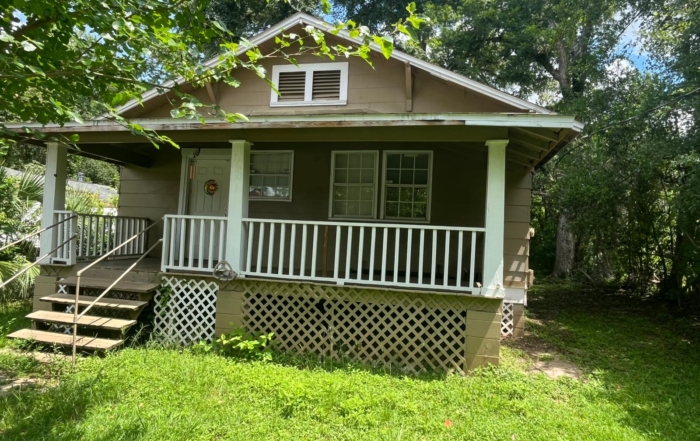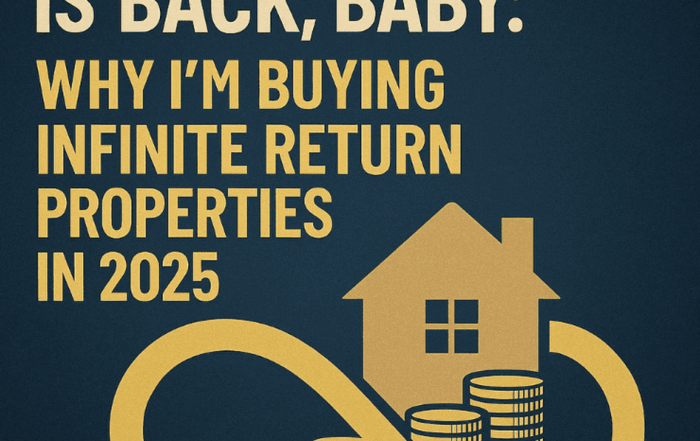
Are Higher Evictions and Lower Rents Here to Stay? A Look at Today’s Cooling Rental Market
As we roll into a new year, the rental market seems to be shifting, with rising evictions and softening rents becoming common topics of conversation. But what’s causing these trends, and are they likely to continue? Here’s a deeper dive into the factors at play and why investors shouldn’t be too quick to worry.
The Cooling Rental Market: A Temporary Shift?
The real estate market is famously cyclical. Just like seasons change, the rental market ebbs and flows with a variety of factors. Currently, many areas are experiencing a slight cooling in rental demand. Some investors are seeing softer rents and rising eviction rates. This can create a sense of unease among landlords, particularly those new to the ups and downs of real estate. However, seasoned investors know that temporary dips don’t signal long-term disaster.
A closer look at the reasons behind this cooling market reveals that it’s likely a short-term trend rather than a permanent shift.
Why Are We Seeing Softer Rents?
Several factors are influencing the rental market today:
-
Seasonal Cooling: It’s not uncommon for the rental market to experience a slight slowdown as the year winds down. People are less likely to move during the colder months or right before the holiday season, leading to lower demand in certain markets.
-
Federal Economic Policies: Recent efforts by the Federal Reserve to combat inflation have led to higher interest rates. While this impacts homebuyers directly, it also has a ripple effect on renters, especially as the higher cost of living takes a toll on household budgets. The rate hikes have temporarily slowed the rental market, but they’re part of a larger plan to stabilize the economy.
-
Increased Supply of Multi-Family Units: Some areas have seen a boom in multi-family housing, increasing rental options and driving competition among landlords. This has put pressure on rental rates in specific markets where new inventory has flooded the market.
-
Economic Strain on Tenants: Rising costs for essentials like food, gas, and utilities are impacting tenants’ ability to keep up with rent. This financial strain can lead to higher non-payment rates, especially in lower-quality rental properties where tenants may already be on tight budgets.
But these factors don’t necessarily spell long-term trouble. In fact, most are temporary issues that tend to correct themselves over time. The Federal Reserve’s policies, for example, are designed to bring inflation down, which will ultimately help renters maintain their budgets more effectively. Additionally, as new multi-family developments get absorbed by the market, the balance between supply and demand will return to normal.
How Long Will This Cooling Period Last?
Looking forward, the current market conditions aren’t expected to last indefinitely. Here’s why:
-
Federal Action Against Inflation: The Federal Reserve’s interventions are already showing signs of working. With inflation cooling, there’s potential for interest rates to drop in the near future. Once the rates start decreasing, housing demand typically rebounds, affecting both buyers and renters positively.
-
Political Influence: With an administration that is highly engaged with the housing industry and focused on economic recovery, policies to support affordable housing and stabilize rents are likely to continue. This is expected to help renters, providing a cushion for the rental market moving forward.
-
Post-Election Stability: The end of an election year often brings policy clarity and economic adjustments that encourage market growth. Renters and investors alike could see more stability as the new year progresses.
In short, as inflation cools and interest rates decrease, we can expect a positive bounce back in the rental market. This bounce may not happen overnight, but the outlook for a more balanced rental market in the coming 12 months is promising.
The Reality of Evictions: Are They Really on the Rise?
While eviction rates have been ticking up in some areas, there’s more to the story. Many of the reported increases in evictions are concentrated in properties with lenient tenant requirements or lower-quality management practices. Here’s why:
-
Tenant Qualification Standards: In areas where rental demand has softened, landlords sometimes relax tenant approval standards to fill vacancies. While this may seem like a good short-term solution, it can lead to higher eviction rates down the line if tenants struggle to keep up with rent.
-
Cost of Living Challenges: With high inflation, many tenants are finding it harder to afford their regular expenses. This can result in higher default rates, particularly among less financially stable tenants. However, these challenges are mostly affecting lower-quality rental properties, where tenants may already be on a tight budget.
On the other hand, well-maintained properties with high tenant standards tend to see much lower eviction rates, even in a cooling market. Property quality and management practices play a huge role in tenant stability. By investing in property upkeep and sticking to rigorous tenant standards, landlords can mitigate the risk of evictions, even during challenging times.
Tips for Navigating the Current Market as a Real Estate Investor
If you’re feeling the pressure of today’s market, here are a few strategies to consider:
-
Invest for the Long Term: Real estate is a long game. Temporary market dips shouldn’t deter you from holding onto quality properties, especially if they’re well-located and well-managed. Property values and rental demand generally trend upward over time, making patience key.
-
Focus on Quality Properties and Tenants: Investing in higher-quality properties with strong management practices helps ensure steady cash flow. Prioritize tenant stability over quick occupancy to reduce the risk of evictions and rent collection issues.
-
Stay Informed on Economic Policies: Keep an eye on changes in Federal Reserve policies and other economic indicators. A potential decrease in interest rates within the next year could rejuvenate the rental market, making this a great time to prepare for future growth.
-
Embrace Tenant Retention: Work with current tenants to help them stay, especially if they have a solid history. Consider offering flexible payment arrangements or slight rent reductions if necessary to avoid the high cost of tenant turnover.
-
Hold Tight: Markets go through ups and downs, and today’s cooling market is no different. Experienced investors know that real estate rewards those who can weather temporary downturns. With the right properties, tenant screening, and management approach, this period of softer rents and higher evictions can be navigated smoothly.
Long-Term Real Estate Investing: Lessons from 25 Years of Experience
After more than two decades in real estate, the current cooling market is nothing new. Real estate has always been cyclical, with periods of growth followed by times of tightening. But the key takeaway is that downturns rarely last forever. Instead, they often create opportunities for growth and improvement.
The most successful investors take a long-term approach, focusing on the underlying value of their properties and the quality of their tenants. By investing in properties that meet strong housing demands, maintaining them to high standards, and adhering to rigorous tenant screening processes, landlords can create a resilient portfolio that weathers any market changes.
As we move into the new year, it’s likely that today’s cooling rental market will stabilize. Policies aimed at controlling inflation and improving affordability, coupled with the expected easing of interest rates, should help strengthen the rental market in 2024. In the meantime, focus on building a quality product and solid tenant relationships—this strategy has stood the test of time.
Final Takeaway: Keep a Long-Term Mindset
For those in real estate investing, remember that short-term fluctuations are part of the journey. Current trends of higher evictions and softer rents are likely temporary. By staying focused on quality management, maintaining strong tenant relationships, and looking ahead to the long-term value of your investments, you’ll come out of this period stronger. After all, as history shows, the real estate market tends to reward those who hold tight through temporary dips.
The rental market is ever-evolving, but with patience, a focus on quality, and an eye on long-term growth, today’s challenges can become tomorrow’s opportunities.
OUR BEST ARTICLES
The Power of Home Equity: Utilizing Your Property’s Value
allanmcnabb2025-07-01T20:40:35+00:00July 1st, 2025|Comments Off on The Power of Home Equity: Utilizing Your Property’s Value
Your home is more than just a place to live; it’s one of the most significant financial [...]
Graystone Real Estate Expands into South Florida via Miami MLS
Jorge Vazquez2025-07-01T00:47:05+00:00July 1st, 2025|Comments Off on Graystone Real Estate Expands into South Florida via Miami MLS
Graystone Real Estate Expands into South Florida via Miami MLS FOR IMMEDIATE RELEASE June 30, 2025 TAMPA, FL — [...]
For Sale: 1046 Dover St, Tallahassee, FL 32304
Jorge Vazquez2025-06-30T18:14:58+00:00June 30th, 2025|Comments Off on For Sale: 1046 Dover St, Tallahassee, FL 32304
Property Details: • Address: 1046 Dover St, Tallahassee, FL [...]
Protected: Here’s How to Get Assignment Fees Financed (Even When Lenders Push Back)
Jorge Vazquez2025-07-01T20:45:37+00:00June 30th, 2025|Comments Off on Protected: Here’s How to Get Assignment Fees Financed (Even When Lenders Push Back)
This content is password protected. To view it please enter your password below: Password:
Florida’s Not Crashing—It’s Resetting: Why This Market Is Still a Goldmine for Smart Investors
Jorge Vazquez2025-06-28T22:52:38+00:00June 28th, 2025|Comments Off on Florida’s Not Crashing—It’s Resetting: Why This Market Is Still a Goldmine for Smart Investors
The so-called "decline" in Florida’s housing market is nothing like 2008. Back then, we were dealing [...]
Subject-To Is Back, Baby: Why I’m Buying Infinite Return Properties in 2025
Jorge Vazquez2025-06-28T22:45:54+00:00June 27th, 2025|Comments Off on Subject-To Is Back, Baby: Why I’m Buying Infinite Return Properties in 2025
Subject-To Is Back, Baby: Why I'm Buying Infinite Return Properties in 2025 It’s crazy the [...]
Ready to take your real estate investing knowledge to the next level? Join our Property Profit Academy today! https://www.propertyprofitacademy.com

Meet our Team of Experts!
Meet Cody Bergstrom, Your Expert in Finding Deals
My team and I have over 20 years of experience in real estate. We have strong relationships with wholesalers, probate lawyers, sellers, and others in Florida. I aim to align your investments with your vision and deliver exceptional results. Contact Vanessa to schedule a meeting: https://graystoneig.com/cody

Meet Lisa Kaye Price, the LendingGig Top MLO
Lisa-Kaye Price – Real Estate Lending Specialist
With 20 years in real estate, Lisa-Kaye is dedicated to helping clients achieve their investment goals through strategic financing. She and her team focus on securing the best financing solutions to maximize leverage – a unique advantage of real estate investing.
Offering various options, including conventional loans, asset-backed and private money solutions, and programs for foreign nationals, Lisa’s expertise ensures clients get the support they need, whether buying new properties or refinancing.
Schedule a meeting with Lisa: https://graystoneig.com/lisa-kaye-price
Meet Marylyn Patankar, Your Property Manager Partner
Hello, I’m Marylyn Patankar, the Field Manager and New Client Ambassador at Graystone Property Management. I educate investors about our perks, onboard new landlord investors, and manage on-site operations. Schedule a meeting with me here: https://graystoneig.com/marylyn








